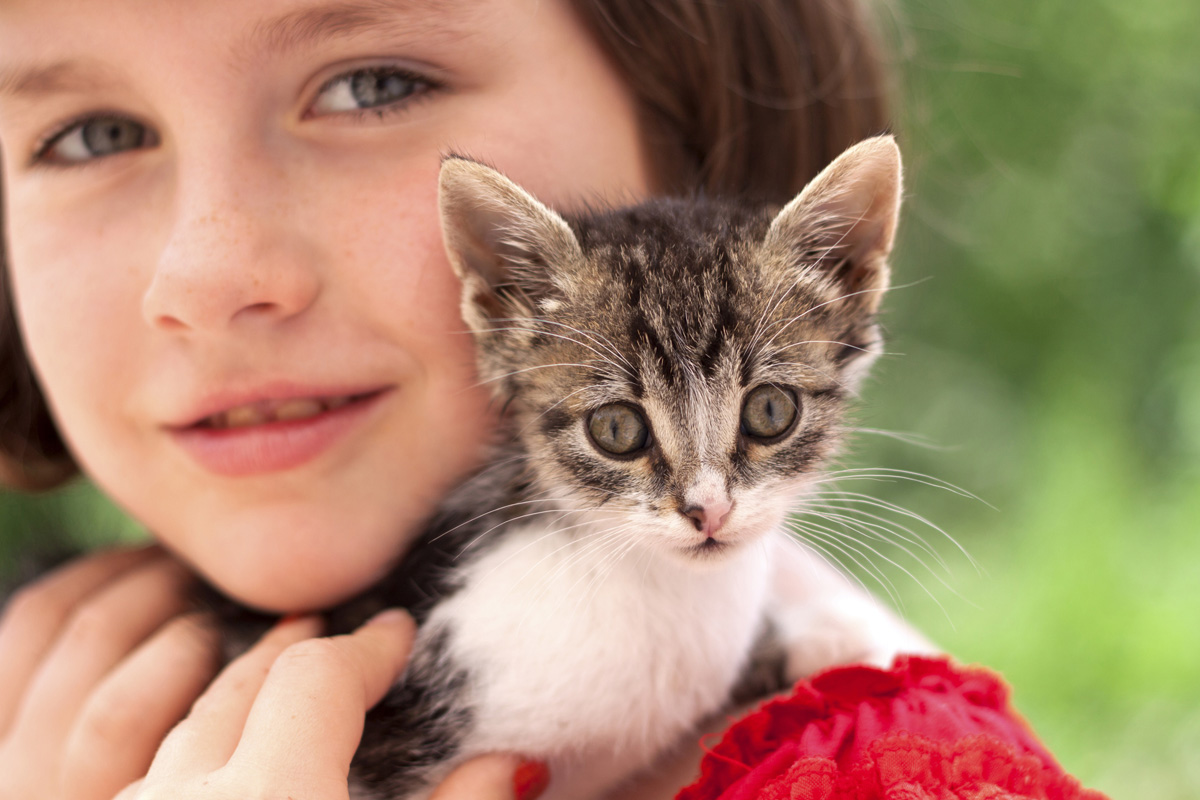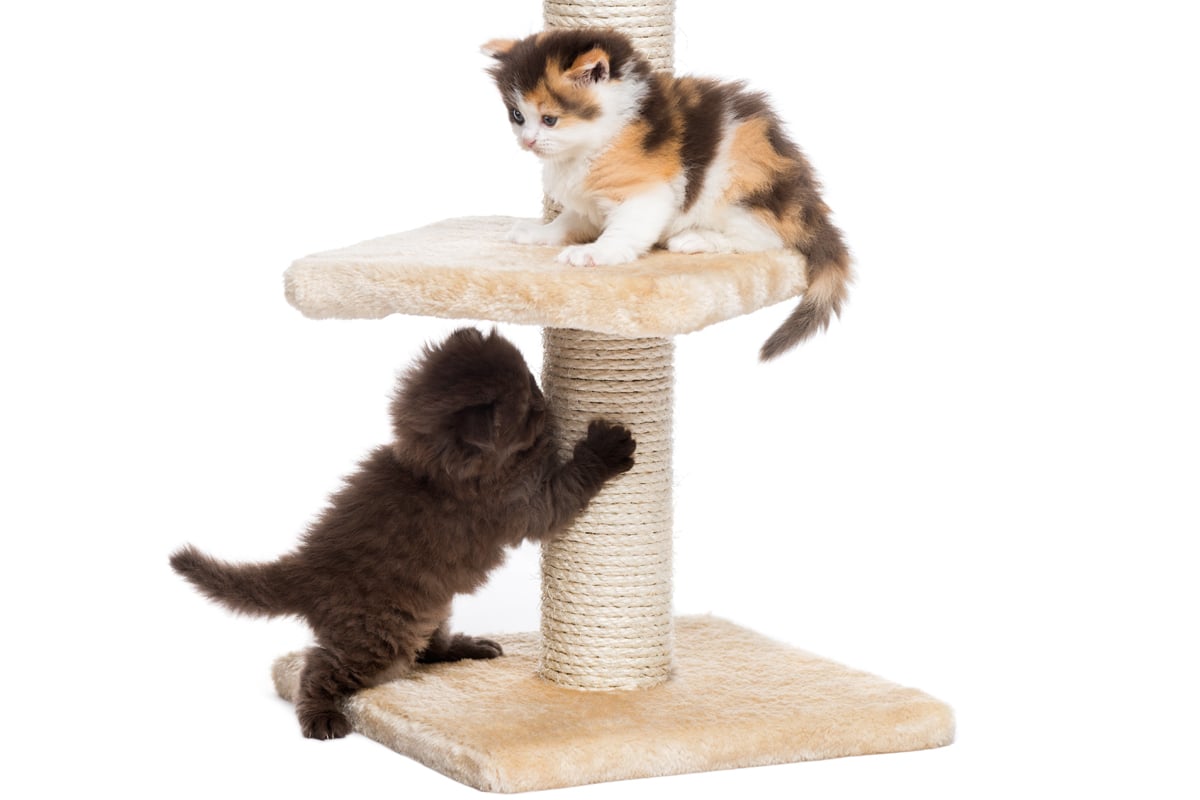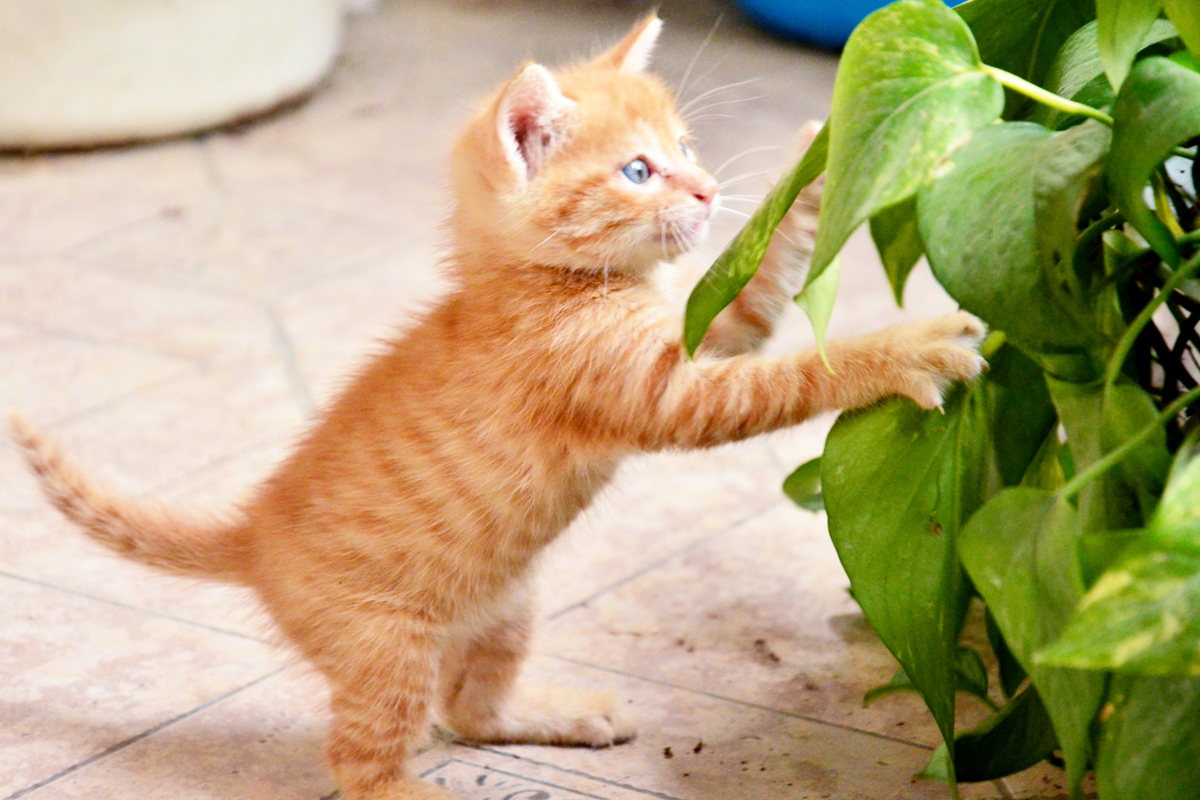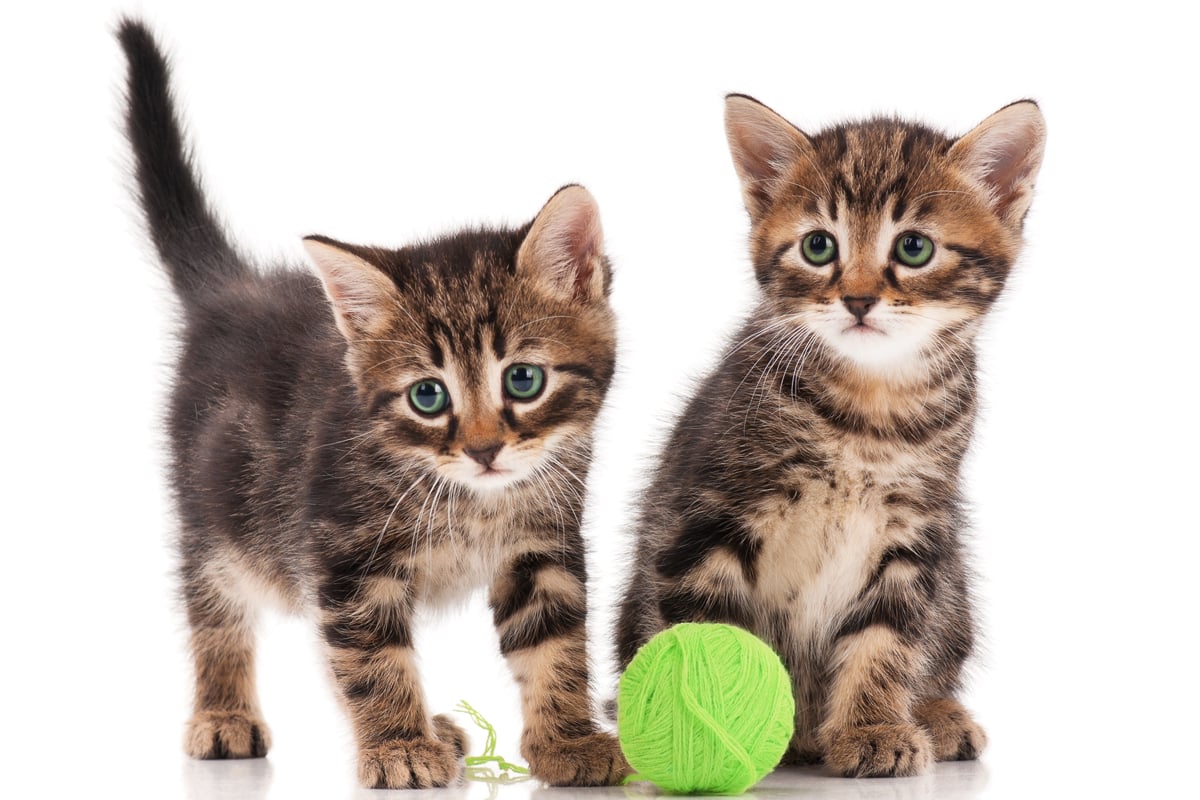When bringing a new cat into your home, it is important to make sure your cat adjusts well and follows along with your house rules. If you need help effectively training your cat, follow along with these helpful tips provided by our experts at North Shore Animal League America.

Provide an Appropriate Scratching Place
It is a natural instinct for a cat to scratch and sharpen his/her claws. As long as he/she is offered an appropriate place to scratch, your furniture and belongings should be safe. There are a number of scratching posts available in pet stores:
- If your cat enjoys scratching leather or vinyl, choose a cardboard post.
- If your cat seems to prefer carpeted surfaces, choose the carpeted posts.
- If your cat prefers to scratch twine or rope bases, choose the thistle posts.
- If the post you choose has a toy attached, stay away from ones with toys larger than a golf ball, as this will most likely intimidate your cat.
When introducing your cat to the post, place it near where your cat sleeps, since cats usually like to stretch and scratch when they wake up. If your cat has already chosen your sofa as a post, try putting the post next to the sofa. This will offer an alternative, more appropriate place for your cat to do his/her scratching.

If you see your cat still using your furniture as a scratching post, try correcting the behavior. Shaking a can of coins or spraying your cat with a water pistol will startle him/her, causing an association with this unpleasant feeling and scratching the furniture. Never let your pet see you correct him/her, and never hit your cat! You do not want them to associate anything negative with you. Offer praise and/or treats if you see them using the proper scratching post.
Place a scratching post near the area where your cat is inappropriately scratching. When your cat goes to scratch the wrong area, direct him/her to the post and praise with pets and treats. Placing some catnip on the post will help attract your cat to the proper place to scratch. You can booby trap the area where he/she is scratching with double sided sticky tape, or tin foil placed on the areas where he/she scratches in addition to placing the right type of scratching post nearby.
Prevent Inappropriate Urination and Defecation
A common problem is when a cat urinates or defecates outside his/her litter box. This problem can have many causes, including potential medical problems (i.e.; urinary tract infections, feline lower urinary tract disease, diabetes, etc.) When your cat begins to exhibit odd behavior, always bring your cat to a veterinarian to rule out medical causes.
Make sure your cat is urinating and not spraying. When a cat sprays, he/she is marking their territory. Usually a cat will back up to a vertical object and shake his tail a bit as he/she sprays the area. It is more common in males but has been noted in female cats too. Make sure your cat is spayed or neutered properly. Oftentimes, the introduction of stray cats in the area will cause an altered cat to spray on areas around the household to mark the area as theirs. In situations like this, you should confine your cat (following the instructions below), and contact your local ASPCA to find out about trap-spay/neuter-release programs they may offer.
Another possible cause is change. New people or animals coming into the home, changing the location of the litter pan or the type of litter, or any changes in the household can cause a cat to modify their litter box behavior. Cats are very routine-oriented and do not like or appreciate change, so try and keep your cat’s comfort in mind. Even minor changes can be very traumatic to a cat’s daily routine.

Solving the Problem
Confining your cat in a small room such as a bedroom or bathroom can help ease your cat into the changes around him/her. The room should be a calming, low traffic area with minimal, if not absent, chaos. You may think that your new pet will want all the space he can get, but during the initial phases of acclimation a smaller space will always work best. Giving your cat too much space too quickly will only overwhelm him/her. Keep the litter pan, water bowls, and all of his/her toys and beds in that room. Make your cat feel as much at home as possible. Offer appropriate hiding places, such as cardboard boxes, or large blankets so your cat can get away from any stressful situations if needed. And remember, always be patient! The move from a shelter to a home, although beneficial, can cause some temporary behavior changes, and it takes time to adjust to and be comfortable in a new environment.
Do not make your cat feel like he/she has been placed into solitary confinement. Go in the room to play with and pet your cat, making him/her feel loved and comforted. Spend some extra time with him/her during feedings. Be sure to document your cat’s litter box behavior while in the room. When all is settled, and your cat seems ready to go back into the rest of the house, make sure to do it slowly. During the first few times you let him/her out, make sure he/she is always closely supervised, and re-introduce him/her to small areas of the house at a time. It is normal for your cat to have accidents during the first few tries. If this happens, put the cat back in the room and try again in a few days. Remember to take it slow and do not get frustrated. Your cat will need time to adjust and relearn the rules of the household.
You can also ‘booby-trap’ the area to keep your cat away from it. Double-sided sticky tape, tin foil, or cans of coins strategically placed will all make it an unpleasant spot for your cat. If your cat fancies houseplants, line the pot with tinfoil, and place some soil in the litter pan to draw him/her there.

While your cat is in confinement, make sure to clean the areas where your cat has urinated or defecated. The best way to get rid of the smell for both you and your cat is to use a 50/50 solution of household vinegar and water. Stay away from harsh cleaning products that may be harmful to your pet. Ammonia based products will attract your cat back to the area because of the similar components of his/her urine. You can even put a small amount of ammonia based cleaner in the litter pan to attract your cat back to the box. If your cat has used piles of clothes left on the floor as his/her litter pan, you can soak them in the vinegar-water solution in the washing machine and then wash them as regular laundry. Oftentimes, the area may need to be cleaned a few times before being fully cleaned.
Try your best to keep the litter pan in the same location for the first few weeks. If it needs to be moved, do so at a slow but steady pace, moving it only a few inches/day. If your cat is an older cat, you will need to keep the litter pan somewhere that is accessible to him/her. Do not place the box on the fourth floor, or down two flights of stairs. Your cat may not make it in time and may have accidents on the way. Keep the litter box far away from the pet’s food & water resources and in a low traffic area with unobstructed views of the surrounding area. There should be a box on each level of the home that the cat has access to.
Changing the type of litter can cause a cat to react negatively. Make sure to gradually mix in the new litter while removing the old brand. This will allow your cat to adjust to the new type of litter at a slow, comfortable pace.
The litter box itself is also an important aspect of litter box behavior. As your cat grows, he/she may no longer fit into the litter pan used as a kitten. Make sure your cat has enough room to turn around inside the litter box. Some cats prefer high-sided litter pans, while others prefer low-sided pans. Closed litter boxes can trap smells inside the box, so if this type is used make sure to keep the box extra clean. The box should be scooped daily, but scrubbed out completely, with a new batch of clean litter at least once a week. Cats are very clean animals, and the cleanliness of their litter boxes will affect how they use it. If your cat defecates or urinates right in front of the box, he/she is probably trying to tell you something regarding the cleanliness, or size, of the box. Keep your cat’s specific needs in mind.

Stop Your Cat’s Play-Biting and Rough Play
The easiest way to prevent play-biting and rough play is to not play rough with your cat. Do not turn petting time into wrestling time. Do not turn your hands or wiggling fingers into your cat’s favorite toy. Use toys that offer some distance between you and your cat. Pole toys, bouncing balls, and cat dancers are wonderful alternatives to your hands.
If your cat becomes over-stimulated and begins to nibble during petting time, give your cat a stuffed toy to chew on. This will teach him/her what is correct to nibble on and what is not. When cats get overexcited during petting time and begin to nip at your fingers and hands, this is not an aggressive act! They are displaying “love bites.” It is an affectionate display and should not be corrected, as it will confuse your cat. If your cat bites down too hard, stop petting your cat and walk away.
Some cats have a very high play-prey instinct. This basically means that they get extremely excited very quickly and will sometimes attack your feet, legs, etc. Be sure your cat has enough toys to sway his/her attention, and keep him/her busy. Correct your cat when he/she plays inappropriately, and offer proper toys. Also, always offer praise and reward for good behavior.



